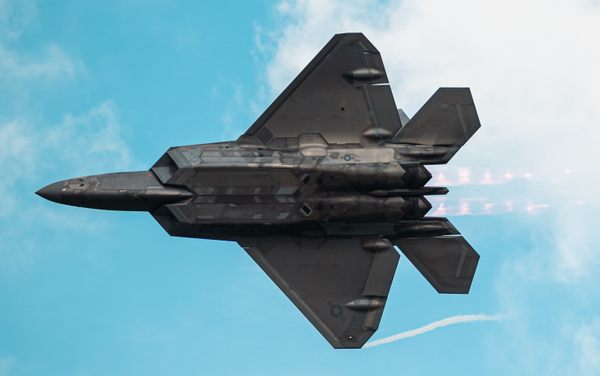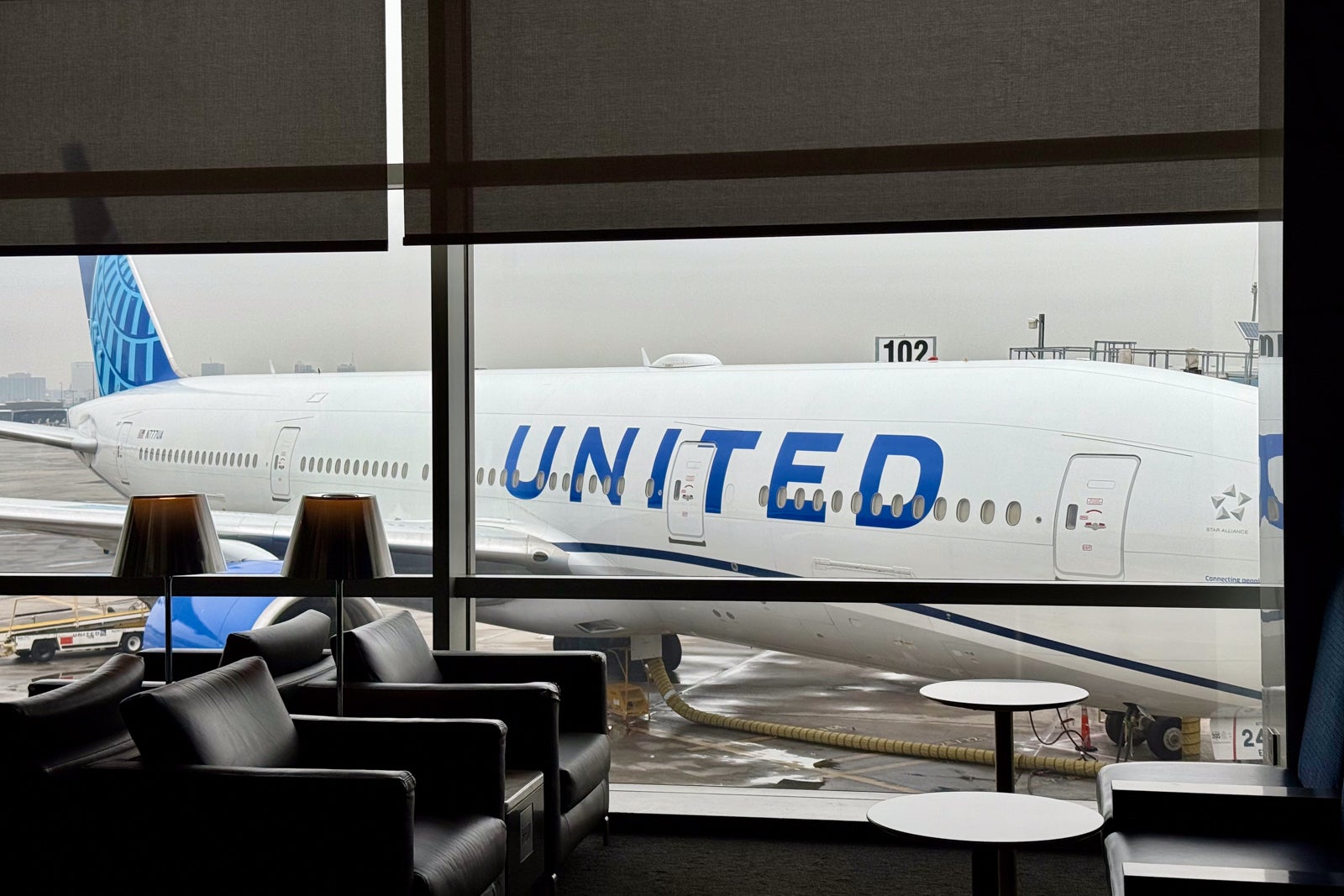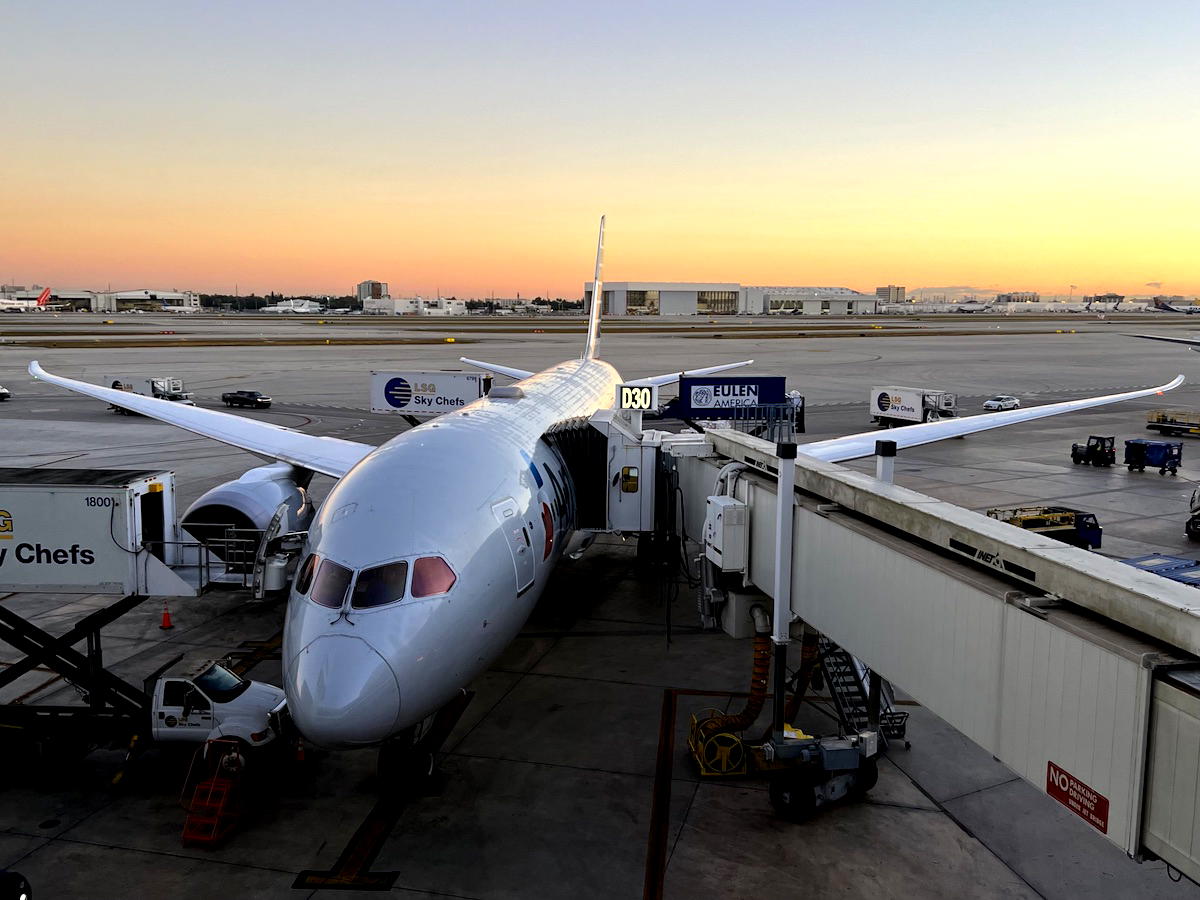Who Swarmed Langley Air Force Base With Drones?
Listen and subscribe on Apple Podcasts, Spotify, and all major podcast apps. Dylan Thuras: In December 2023, at Langley Air Force Base in Virginia, it’s just after sunset, and something weird is happening in the sky. Just after dusk, a drone would arrive, and then another, and then another. And this happened for 17 nights straight. On any given night, between one and two dozen of these drones would appear above the base. Some had lights. Some didn’t. They would fly in this kind of formation and then split off. Their size varied. Some were big. We’re talking like the size of a car. Senior military commanders would scramble onto rooftops with binoculars and night vision goggles to try and get a better look at them. And then suddenly, it stopped. The drones disappeared as quickly as they had come. But the strangest thing about the whole situation is that it seemed that no one at this incredibly secure, highly technologically advanced Air Force Base could figure out what was going on. Or at least, they certainly wouldn’t say it publicly. Ten, 15 years ago, drones were basically considered toys. Or at least, they certainly weren’t on most people’s radar. Today, they are everywhere. Physically, but also in the news. They are at the forefront of the war in Ukraine. You might have recently heard about Operation Spiderweb. This is when trucks drove from Ukraine into Russia. The tops opened up, and they unleashed more than 100 drones, which immediately kamikazed themselves into Russian air bases. You might remember the New Jersey drone panic from not that long ago, a year ago, when it seemed like every day, people were seeing more and more drones in the sky, and the media was in a kind of total frenzy. It all kind of fizzled out, dismissed as hysteria. But before these bigger news stories, there was this other quieter incident, these mysterious drones at Langley Air Force Base. And so I wanted to know whatever happened with that. So I called up reporter Gordon Lubold. He is a foreign policy and national security reporter at The Wall Street Journal. And he just reported on a number of these drone incidents, including the one at Langley Air Force Base. Thanks for taking the time, Gordon. I really appreciate it. Gordon Lubold: Oh, no, no, no. Happy to do it. This is an edited transcript of the Atlas Obscura Podcast: a celebration of the world’s strange, incredible, and wondrous places. Find the show on Apple Podcasts, Spotify, and all major podcast apps. Dylan: I’ve been following this for a while. And when the story about the drones over Langley AFB happened, it was like a pretty quiet story. It was kind of like, it was this weird thing, and you’re like, what the hell? And then, yeah, obviously it didn’t bubble up into this giant national phenomenon. And then literally like one year later, you’ve got this kind of New Jersey drone explosion that suddenly becomes like, you know, it’s like a few weeks of really pretty constant coverage. Gordon: It was crazy. But the thing that was also, I think maybe there was some irony in it, is that in the end, I never thought that the New Jersey drone thing was actually a scary thing. Like, I think it was weird, and I think it was kind of circular reporting and people seeing the drones up, whereas the Langley thing actually remains a mystery and is actually a legitimate issue of concern, honestly. I’m Dylan Thuras, and this is Atlas Obscura. Today on the show, what happened with those drones at Langley Air Force Base? And how should it change the way we are thinking about the world? Dylan: Let’s go back to December of, I think, 2023. What happens at the Langley Air Force Base? Gordon: So unbeknownst to all of us, essentially, at the time, was a 17-day series of drone swarms circulating the base. And it started one night, and I think that the people on the base were, you know, taken off guard by it. But as it continued, essentially every night, it really amounted to they were completely stumped by what these things were, who sent them, and what they were doing. Dylan: And just to say it, Langley Air Force Base, like, it’s a relatively important air force base. It’s got some pretty important stuff, some pretty sort of high-end fighters there. Like, you know, it must have been pretty weird to have all these, you know, lights in the sky, weird drones. They’re calling, like, the UFO department to be like, what? Do you know what these are? Gordon: So there is, like, you know, fifth-generation jet fighters on the base sitting there. You know, it’s not an overstatement to say $150, $130 million jet fighters sitting, like, sitting ducks on the base. And as we later report, as we reported in this story, they were later flown off the base to get them out of kind of harm’s way, because they didn’t know they could be taken out very quickly. Dylan: So what, then, does the Air Force do about these drones? They’ve got these weird things in the air in a place they probably really

Listen and subscribe on Apple Podcasts, Spotify, and all major podcast apps.
Dylan Thuras: In December 2023, at Langley Air Force Base in Virginia, it’s just after sunset, and something weird is happening in the sky. Just after dusk, a drone would arrive, and then another, and then another. And this happened for 17 nights straight. On any given night, between one and two dozen of these drones would appear above the base. Some had lights. Some didn’t. They would fly in this kind of formation and then split off. Their size varied. Some were big. We’re talking like the size of a car.
Senior military commanders would scramble onto rooftops with binoculars and night vision goggles to try and get a better look at them. And then suddenly, it stopped. The drones disappeared as quickly as they had come. But the strangest thing about the whole situation is that it seemed that no one at this incredibly secure, highly technologically advanced Air Force Base could figure out what was going on. Or at least, they certainly wouldn’t say it publicly. Ten, 15 years ago, drones were basically considered toys. Or at least, they certainly weren’t on most people’s radar. Today, they are everywhere. Physically, but also in the news.
They are at the forefront of the war in Ukraine. You might have recently heard about Operation Spiderweb. This is when trucks drove from Ukraine into Russia. The tops opened up, and they unleashed more than 100 drones, which immediately kamikazed themselves into Russian air bases. You might remember the New Jersey drone panic from not that long ago, a year ago, when it seemed like every day, people were seeing more and more drones in the sky, and the media was in a kind of total frenzy. It all kind of fizzled out, dismissed as hysteria.
But before these bigger news stories, there was this other quieter incident, these mysterious drones at Langley Air Force Base. And so I wanted to know whatever happened with that. So I called up reporter Gordon Lubold. He is a foreign policy and national security reporter at The Wall Street Journal. And he just reported on a number of these drone incidents, including the one at Langley Air Force Base. Thanks for taking the time, Gordon. I really appreciate it.
Gordon Lubold: Oh, no, no, no. Happy to do it.
This is an edited transcript of the Atlas Obscura Podcast: a celebration of the world’s strange, incredible, and wondrous places. Find the show on Apple Podcasts, Spotify, and all major podcast apps.

Dylan: I’ve been following this for a while. And when the story about the drones over Langley AFB happened, it was like a pretty quiet story. It was kind of like, it was this weird thing, and you’re like, what the hell? And then, yeah, obviously it didn’t bubble up into this giant national phenomenon. And then literally like one year later, you’ve got this kind of New Jersey drone explosion that suddenly becomes like, you know, it’s like a few weeks of really pretty constant coverage.
Gordon: It was crazy. But the thing that was also, I think maybe there was some irony in it, is that in the end, I never thought that the New Jersey drone thing was actually a scary thing. Like, I think it was weird, and I think it was kind of circular reporting and people seeing the drones up, whereas the Langley thing actually remains a mystery and is actually a legitimate issue of concern, honestly.
I’m Dylan Thuras, and this is Atlas Obscura. Today on the show, what happened with those drones at Langley Air Force Base? And how should it change the way we are thinking about the world?
Dylan: Let’s go back to December of, I think, 2023. What happens at the Langley Air Force Base?
Gordon: So unbeknownst to all of us, essentially, at the time, was a 17-day series of drone swarms circulating the base. And it started one night, and I think that the people on the base were, you know, taken off guard by it. But as it continued, essentially every night, it really amounted to they were completely stumped by what these things were, who sent them, and what they were doing.
Dylan: And just to say it, Langley Air Force Base, like, it’s a relatively important air force base. It’s got some pretty important stuff, some pretty sort of high-end fighters there. Like, you know, it must have been pretty weird to have all these, you know, lights in the sky, weird drones. They’re calling, like, the UFO department to be like, what? Do you know what these are?
Gordon: So there is, like, you know, fifth-generation jet fighters on the base sitting there. You know, it’s not an overstatement to say $150, $130 million jet fighters sitting, like, sitting ducks on the base. And as we later report, as we reported in this story, they were later flown off the base to get them out of kind of harm’s way, because they didn’t know they could be taken out very quickly.
Dylan: So what, then, does the Air Force do about these drones? They’ve got these weird things in the air in a place they probably really should not be. They can’t really figure out where they’re coming from. What do they do?
Gordon: It was hard. I mean, I think a lot of it was they didn’t know what to do and how to respond. And they removed the F-22 Raptors that were there, the jet fighters, and got them out of the way. I think they probably did some other things that we don’t necessarily know what they did. And tried to kind of assess what these things were doing. They essentially were trying to understand if there was a rhythm to their occurrence, which was, in the end, they never were able to kind of figure out quite where they went. This, we should say, escalated quickly to not just the Air Force on the base, but to the Pentagon, and then ultimately to the White House, where there were pretty regular meetings. It doesn’t sound very sexy, but they were huddling over what this was and what to do about it. Because the idea that it could be a foreign adversary was top of mind.
Dylan: Yeah. I think part of what was so surprising about this story was, a little bit, the sense of inability to do anything. And some of that inability was maybe technological. Some of it was kind of legal, about like, do we have the authority? What’s the fallout going to be if we shoot these things out of the sky? I mean, there’s all kinds of wacky solutions discussed about taking them down. Maybe you could touch on a few of the ideas that were floated, but then ultimately seemed not to prove viable for various reasons.
Gordon: Shooting them down is in itself a danger. You shoot down a drone, they clearly could have probably done that. But it lands on some kid’s head in a playground, that’s not so good. Another thing is to use electromagnetic waves or other electricity to just disable it.
Dylan: Yes.
Gordon: But if you don’t do that right, you could have the same problem. And again, remember that so far, these things haven’t done anything wrong. They seem dangerous because they’re a little scary, nobody knows what they’re doing or why they’re there and who sent them, but they haven’t done anything exactly. So there’s a risk assessment there. Do we want to shoot it down? If it’s actually attacking the base, that might be a different story. The kind of most fun thing, and I’m dating myself here, but I used to watch Scooby-Dooby-Doo, how he captured the bad guy at the end with a net. Even then, I remember thinking, can’t the guy get out of the net? And so there was a Coast Guard ship off the coast that did have the capability to shoot a big net into the sky, potentially capture one of these drones. But this was a legal authority issue. And so the whole episode clearly did point out the vulnerabilities of these kinds of drone flights, even though they weren’t really doing anything.
Dylan: And now comes the question, where the hell are these coming from? I guess maybe we could start by talking about potential suspects. So I’m going to start with maybe the silliest one. Were these aliens?
Gordon: Right. So I think the conclusion is no, they weren’t. Somebody did say to me that there was some evidence that these things were flying into the water and then back out again, which sounds crazy because a drone normally, unless it’s some kind of crazy super drone that we don’t really know, that starts to get goosebump time. But the idea that they were aliens was probably ruled out fairly quickly.
Dylan: Okay, suspect two, hobbyists. Maybe someone building something weird, crazy in their garage. I don’t know. Is this some local kids goofing off?
Gordon: Right. And so that’s a very plausible theory, but it kind of lost credibility after a while because it was clear that there was just the sheer number of these things. The idea of one or two or even a half a dozen hobbyists kind of doing this seemed incredible. And this would be a pretty serious offense to just be flying all over a military base with these assets there. This seemed far more sophisticated than any, even one or several hobbyists could do.
Dylan: Could they have been our drones? Not necessarily Langley’s drones, but sometimes we do stuff to send signals to other places and say, hey, by the way, we have this technology. Could they be ours?
Gordon: Not a crazy theory at all. We try to track that down as well, that it could be, you know, another government agency, i.e., the CIA, kind of probing their own government. It’s not crazy to think that the government doesn’t always talk to other parts of the government and things are very stovepiped. That’s pretty ballsy, honestly.
Dylan: It would be awfully rude, you know, 17 nights in a row.
Gordon: Right. I mean, I would think at some point, and then the ensuing investigation and the coverage, you know, would have led to somebody saying, yeah, sorry, dude, that was us. Like, probably went too far, but like that.
Dylan: Okay. So that basically, in our suspects, it leaves basically everyone else, you know, China, Russia, Iran, you know, insert someone else here, maybe, presumably an adversary. So where are we left? Because they never got their hands on one of these drones, right?
Gordon: Right. As far as I understand, none of the drones from the swarms were ever snagged and taken and dissected. There’s a couple of things to answer your question. I think, likely China. There was a separate incident around the same time, which was not really part of the series of incidents. China sends low level Chinese operatives to the U.S. all the time to conduct kind of like this meta surveillance. They go to military bases, they pose as tourists, they wander around and, you know, sometimes they get caught and sometimes they don’t. And there was a young kid who was flying a drone over the naval yard there, where sensitive aircraft carriers and nuclear subs are built. You know, it was funny, because he—it was like a dark, cold night in the middle of January. He supposedly was a tourist. He bought the drone on sale at Costco a few days earlier, flew to Norfolk and was flying around and got stuck in a tree and couldn’t get it out. And I think the police came.
Ultimately, he fled without the drone, left the drone in the tree. Ultimately, he was apprehended, getting on a one way ticket to China in San Francisco. They got the drone. From all we understood, what they learned is like the drone had a lot of footage of the shipyard and the construction of ships there. And he was charged and convicted. And I think he got six months in prison. But it’s also just the kind of greater context of the willingness of China to kind of spend money trying to surveil or at least probe and see what the response is at military bases and other things all around the country already. And so, you know, if I was betting, I would say I think these were Chinese drones.
Dylan: How do you frame all of this? Like, there is weird stuff happening with drones. That much seems clear. There’s a lot of noise. What is the big signal that you pull out of all of these stories?
Gordon: I guess what I take away from the whole thing is, U.S. military is not known always for its nimbleness. And I think this episode pointed up the challenge it has to responding to a today issue. A today issue is there’s drones all over the freaking skies. Some of them may be, you know, just kind of in the way. Others may be, you know, used for nefarious purposes. And it was interesting to cover and to report and write a story about a time when the military, which is generally full of capabilities and precision and ideas and readiness and preparedness, really just was kind of brought to its knees.
Dylan: And I can’t help but wonder, there’s this interesting tension, which is there. This is a rapidly changing, evolving part of battle, of surveillance, of almost, I don’t know how to put it, geography. Like our space, the three-dimensional space we are living in is changing dramatically around us. And that there’s also this effort to kind of keep that narrative or that fact from kind of spinning into something out of the control of the people who kind of, you know, don’t want everyone freaking out and sort of things starting to escalate in funny ways.
Gordon: Part of the problem with the public assurances over the New Jersey drone incidents was that, as I think you kind of alluded to earlier, was like, they really don’t know what was going on over Langley or they haven’t said. And so for them to say, nothing to see here, there’s nothing happening here, is hard to kind of believe, even though I kind of did believe them because I did some reporting on it. But like, felt like if you’re not able to come clean over this other set of incidents, how can you assure the public over these?
Dylan: Right. It becomes very hard to pull the signal from the noise in both directions. And there’s so little information being shared. And so we end up in this funny place where I feel like now when I talk to people, they’re either, you know, they’re kind of like into the conspiracy area or they’re just like, oh, that was all just like crazy mass hysteria.
Gordon: Right. The media just going crazy or whatever.
Dylan: Just because there was a lot of hysteria, doesn’t mean something weird isn’t going on. And I think that’s where we find ourselves.
Gordon: Right. A hundred percent.
Dylan: That was Gordon Lubold. He is a reporter at The Wall Street Journal. He’s done a lot of great reporting on drones and national security issues. We’ll put a link to some of his work in our episode description. You know, Gordon makes a pretty convincing case that America is being spied on or tested or intimidated using drones, balloons, other things that don’t quite fit our expectation of what you’re going to see when you look up into the sky. So maybe we will talk about this again down the line. Stay tuned.
Listen and subscribe on Apple Podcasts, Spotify, and all major podcast apps.
This episode was produced by Johanna Mayer. Our podcast is a co-production of Atlas Obscura and Stitcher Studios. The people who make our show include Doug Baldinger, Chris Naka, Kameel Stanley, Manolo Morales, Amanda McGowan, Alexa Lim, Casey Holford, and Luz Fleming. Our theme music is by Sam Tindall.

































































































































































































































































